AWS EKS high-density pods

AWS recently released a new version of the AWS CNI that allows more Pods to be deployed within each EC2 instance. Having an higher pod density results in more efficiency and a significative reduction in EC2 costs necessary to run the same number of pods. How does the solution work under the hood? And if it’s that good, why has not been released before?
A bit of background
In order to understand the changes that the new version brings, it is necessary a bit of background on how intra-node networking works in Kubernetes.
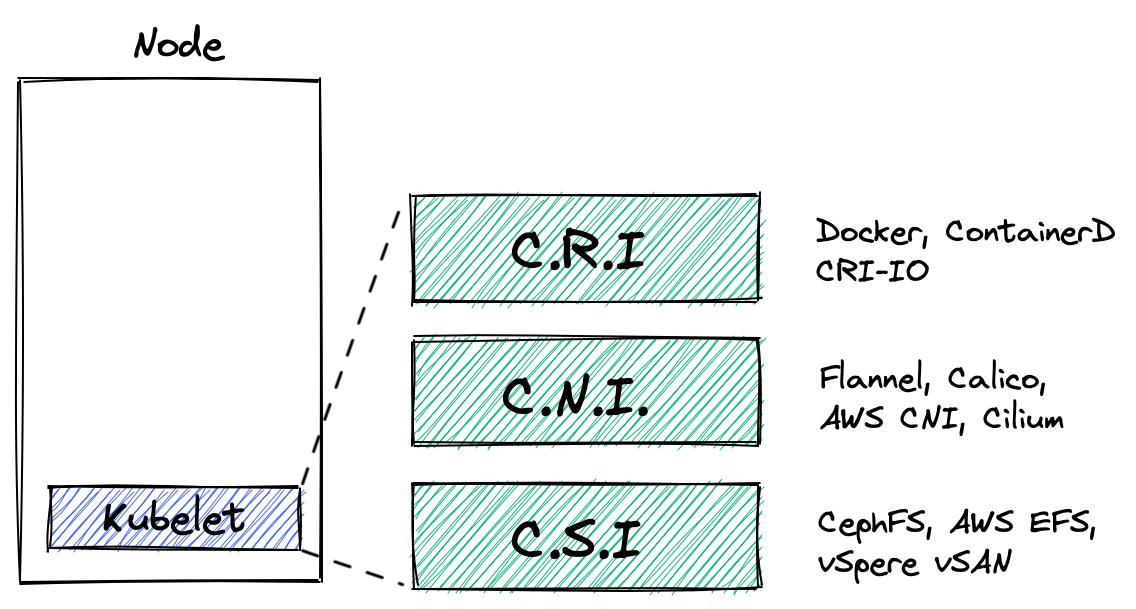
Each time a new pod is created, the kubelet agent delegates:
- Creating the container to the Container Runtime Interface
- Attaching the container to the network to the Container Network Interface
- Mounting volumes to the Container Storage Interface
But for the scope of this post, let’s focus on the CNI part.
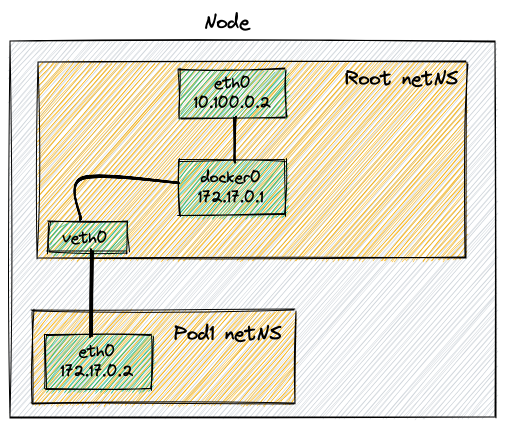
Each pod has its own isolated Linux network namespace and is attached to a
bridge. The CNI is in charge of creating the bridge, assigning the IP and
connecting veth0 to the docker0.
AWS is doing it differently
This is how most of the CNIs works and what happens most of the time, but different CNIs might use other ways to connect the container to the network.
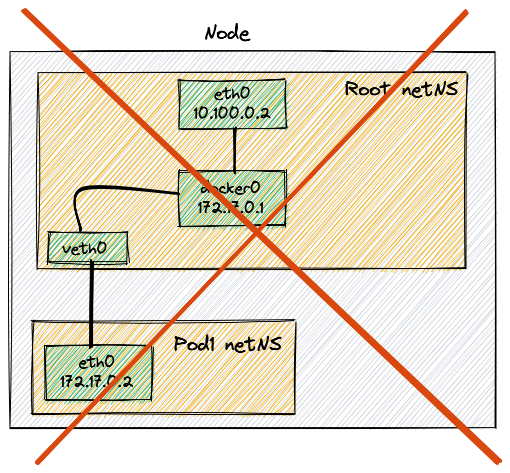
As an example, there might not be a docker0 bridge; the AWS CNI is an
example of such CNI. In order to understand the reason of this choice, let’s
investigate on how EC2 networking works.
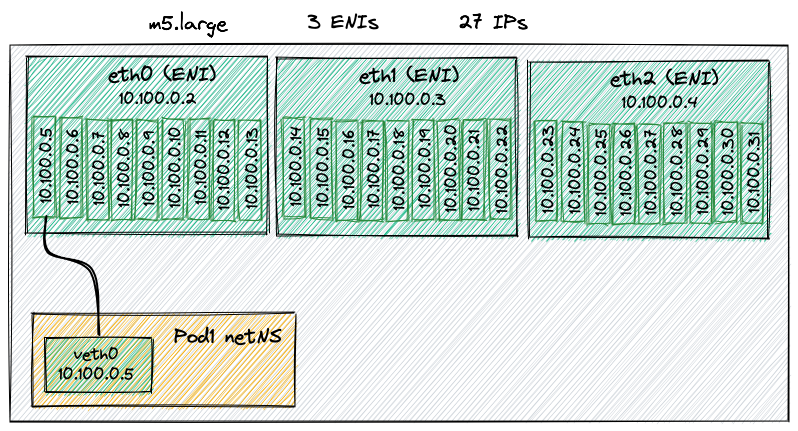
In AWS, each EC2 instance can have multiple network interfaces (ENIs) and each
of them can be assigned a limited number of IPs. For example, an m5.large can
have up to 10 IPs for ENI; out of those 10 IPs one of them has to be assigned to
the network interface itself while the remaining can be assigned freely.
In the past, these extra IPs were assign to Pods but there was a big limit: the number of assignable IP addresses for each node.
Let’s have a look at an example.
An m5.large EC2 instance can have up to 3 ENIs with 10 IP private addresses
each. Since one IP is reserved for the ENI, remains left 9 addresses per ENI and
thus 27 in total. As a conseuences the EC2 m5.large could run up to 27 Pods,
not a lot actually.
Let’s enter prefixes
In August 2021 AWS released a change to EC2 that allows prefixes to be assigned to network interfaces.
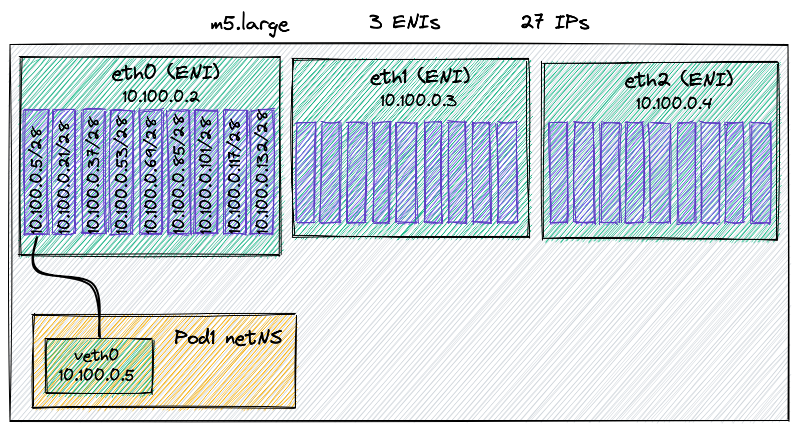
Prefixes?! In simple words, instead of supporting a single IP address, ENIs now support an IP range. Thus the same EC2 instance, which had 10 private IP addresses, now can have 10 ranges of IP addresses. And how big is the range? By default, 16 IP addresses; so with 10 ranges you could have up to 160 IP addresses.
Let’s have a look at another example.
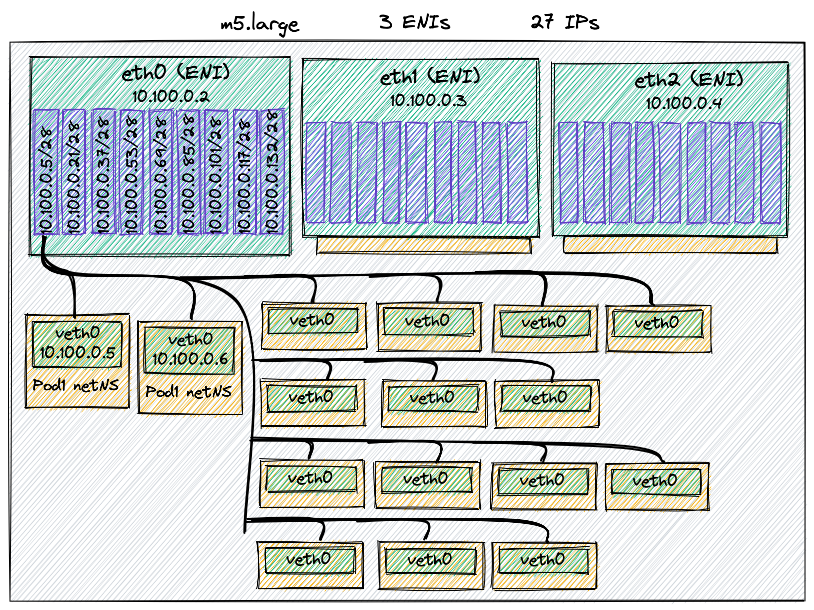
An m5.large can have 3 ENIs with 10 slots each for IPs or prefixes; since
one IP is reserved for the ENI, you’re left with 9 prefixes. Each prefix is 16
IPs, so 9*16=144 IPs. Since there are 3 ENIs, 144x3=432 IPs.
The same EC2 can now runs up to 432 Pods, not only 27 as before!
AWS CNI 1.9 and Pod-per-node limit
The AWS CNI 1.9.0 includes support to prefixes and caps the max number of Pods to 110 or 250 so you won’t be able to run 432 Pods on an m5.large; the latter in comòiance with the official Kubernetes large clusters guide recommendation. The CNI is also tunable and will prewarm IPs and prefixes so that your Pods start instantly.
So… in order to answer the question at the beginning of this post, her’s why the AWS-CNI 1.9.0 release (hopefully) makes more sense now!

